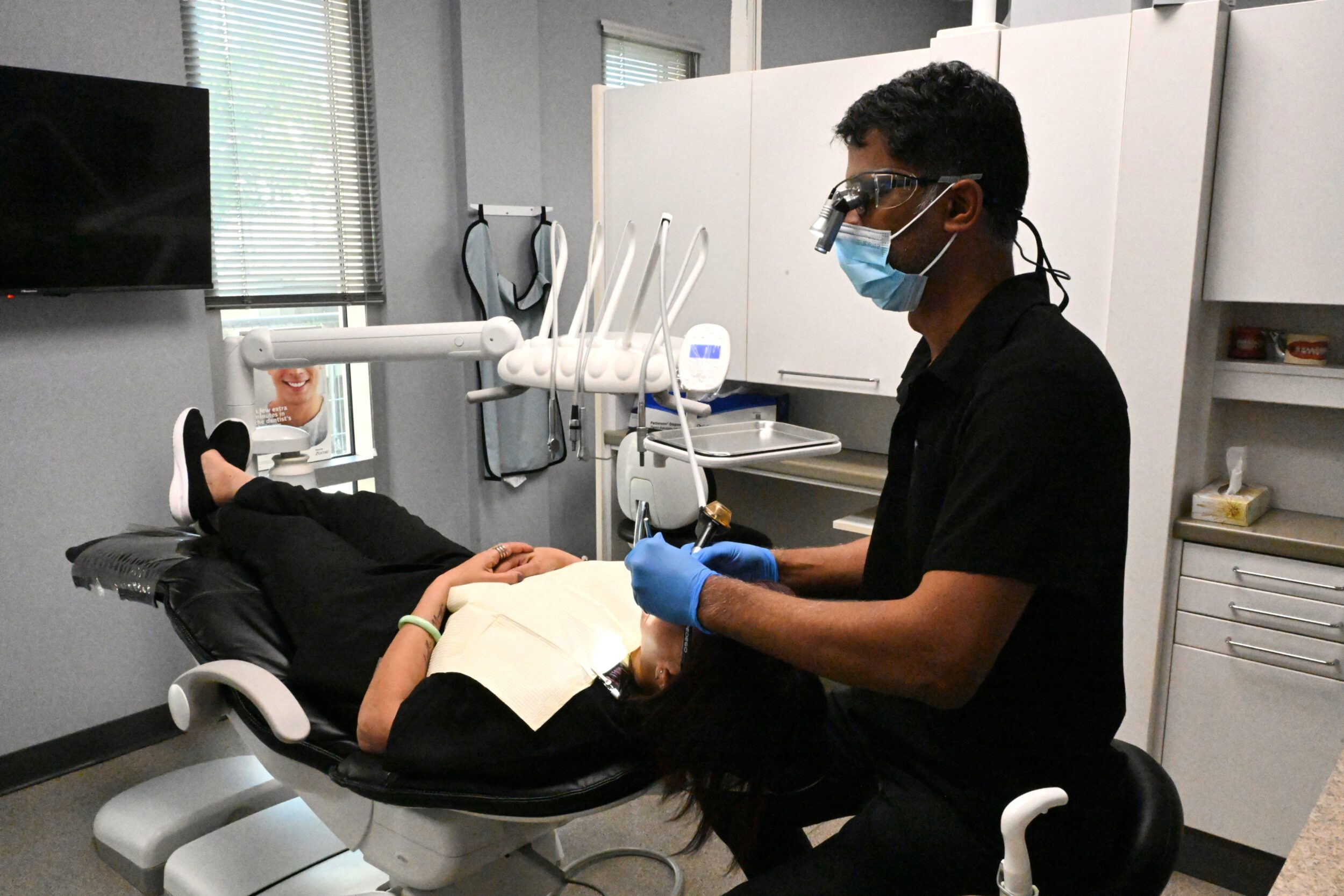Signs Symptoms of Periodontal Disease in Calgary, AB
Among adults in the developed world, periodontal disease (also known as periodontitis and gum disease) is the leading cause of tooth loss. Periodontitis is a disease that develops when toxins found in plaque cause irritation or inflammation of the gingiva (gum tissue) within the mouth. This can ultimately lead to the destruction of the gum tissue and the underlying bone due to the bacterial infection that develops, commonly known as gingivitis. There is also a risk of tooth loss or loose teeth as a result of untreated periodontal disease.

There are many types of periodontal disease that can affect your teeth including aggressive, chronic, necrotizing periodontitis, and periodontitis associated with systemic diseases. In order to prevent further bone loss and tissue damage caused by clinical periodontal disease, each type of periodontal disease has its own distinct symptoms and characteristics that should be addressed by your dentist as soon as possible.
Here are some common signs and symptoms
It is extremely important to keep in mind that periodontal disease can progress without causing any signs or symptoms, such as pain, or any visible signs or symptoms. The importance of regular dental checkups can’t be overstated. There are many reasons for this. The following are some of the most common signs and symptoms of periodontitis that you might encounter.
It is important to seek the advice of a general dentist or periodontist as soon as possible if you exhibit any of these signs or symptoms:
- Bleeding without explanation – A periodontal infection is characterized by bleeding when brushing, flossing, or eating food. Plaque contains toxins that cause bacterial infections, which make the tissues prone to bleeding as a result of the bacterial infection.
- The problem of bad breath or halitosis – In spite of the fact that bad breath can originate from the back of the tongue, the lungs and stomach, from the food we consume, or even from smoking, it is possible for it to be caused by old food particles which are lodged between the teeth and underneath the gum line. In the case of deep gum pockets, this can result in a foul odor due to the accumulation of more debris and bacteria.
- Loose teeth/change in bite pattern – An early sign of rapidly progressing periodontitis is the loosening or shifting of the teeth in the area that has been affected by the disease. The destruction of bone tissue may result in teeth that were once firmly attached to the jawbone becoming loose or shifting.
- Pus – An oozing pus between the teeth indicates the presence of a periodontal infection. This is a result of the body trying to fight the bacterial infection by producing pus as a result.
- Swelling, pain, or redness– Swollen, red, or painful gums may indicate a periodontal infection. The infection must be stopped before it affects the gum tissue and jaw bone. Additionally, it is very important to treat the infection before it is passed into the bloodstream and is carried to other parts of the body by the blood.
- Longer-looking teeth – Gum recession can be caused by periodontal disease. Bacteria produce toxins that can destroy the supporting tissue and bones, making the teeth appear longer and the smile appear
Periodontal disease treatment and prevention
In order to prevent further damage to the gum tissues and jawbone, it is necessary to halt the progression of periodontal disease before it causes further damage to them. In order to determine the progress of the disease, the dentist will first assess the whole mouth in order to determine how the disease is progressing. The dentist may prescribe antibiotics as part of a treatment plan that includes both nonsurgical and surgical measures to treat the bacterial infection after a diagnosis has been made.
The pockets (under the gumline) of the teeth will be completely cleared of debris using a procedure known as scaling and root planing. If there are any bacteria left in the pockets, they may be treated with antibiotics in order to enhance healing and kill any bacteria left behind.
There are several different ways in which severe periodontitis can be treated, including:
- Laser treatment – In this treatment, the size of the gum pockets between the teeth can be reduced by using lasers to eliminate them.
- Tissue & bone grafting – In cases where a considerable amount of bone or gum tissue has been destroyed, the dentist may elect to graft new tissue by inserting a membrane to stimulate the growth of new tissue in the area.
- Pocket elimination surgery – In order to directly reduce the size of the gum pockets, the dentist may opt to perform “flap surgery” to perform this procedure.
Please consult your dentist if you have further questions regarding periodontal disease symptoms.